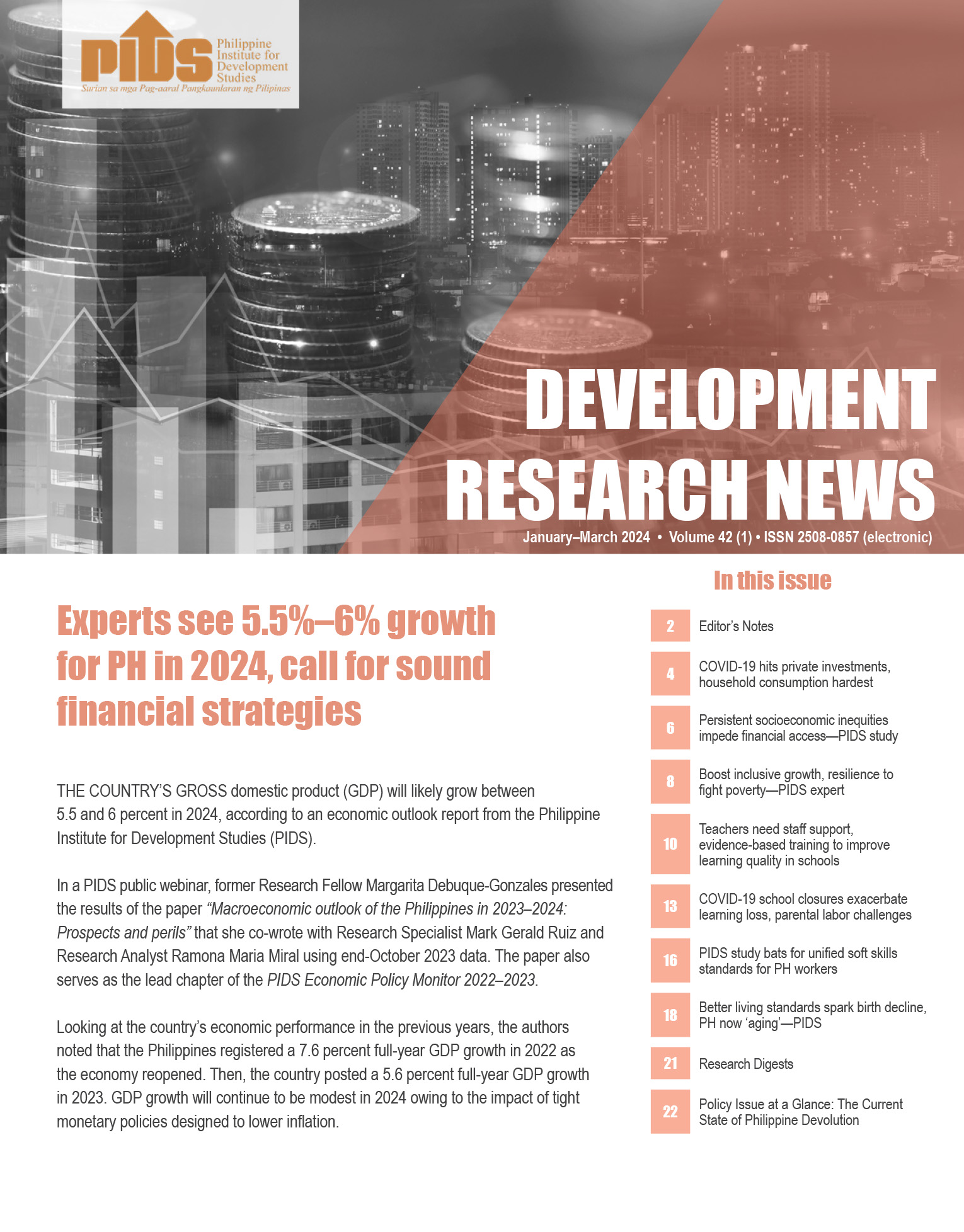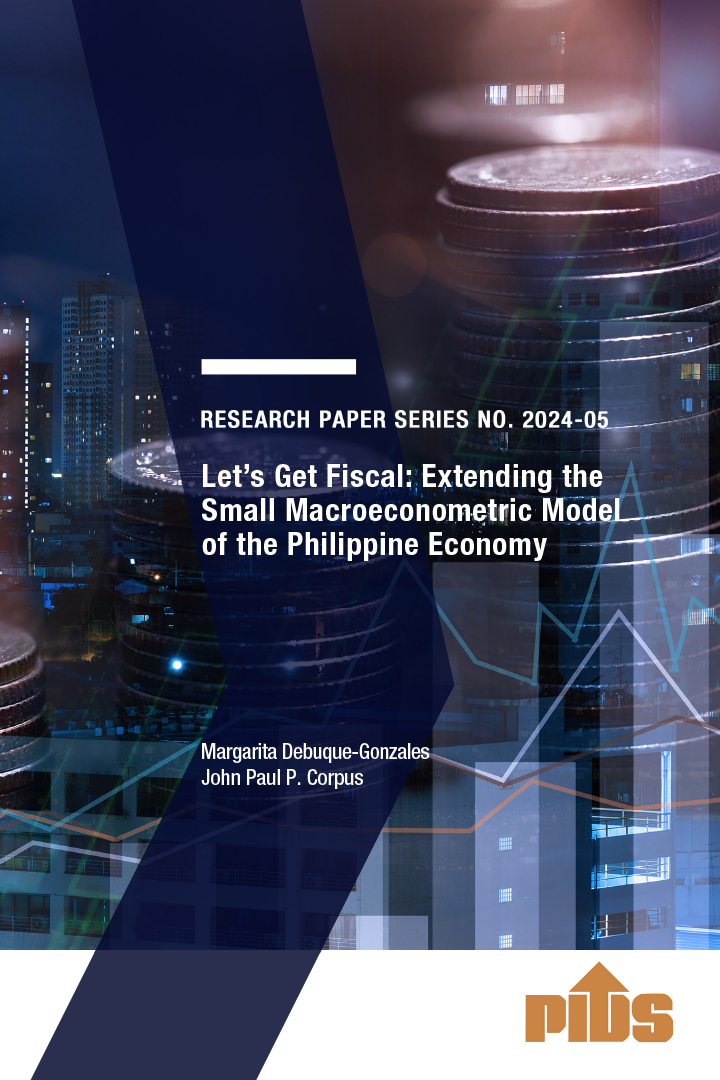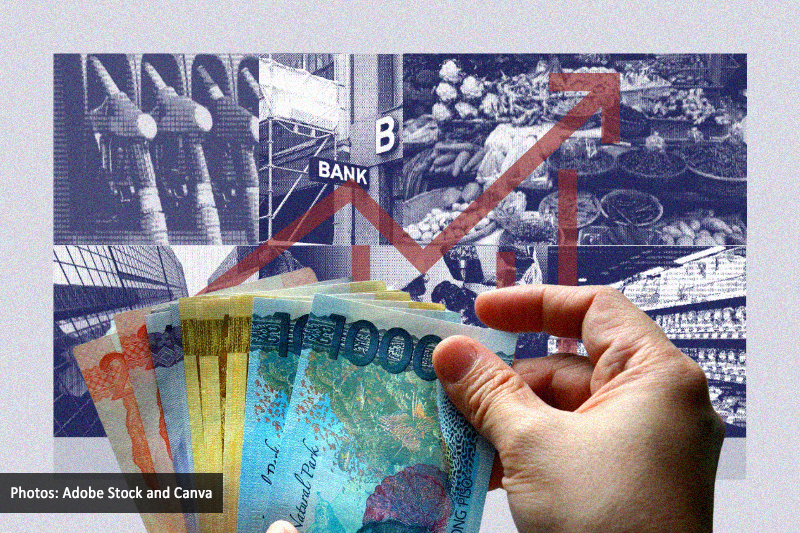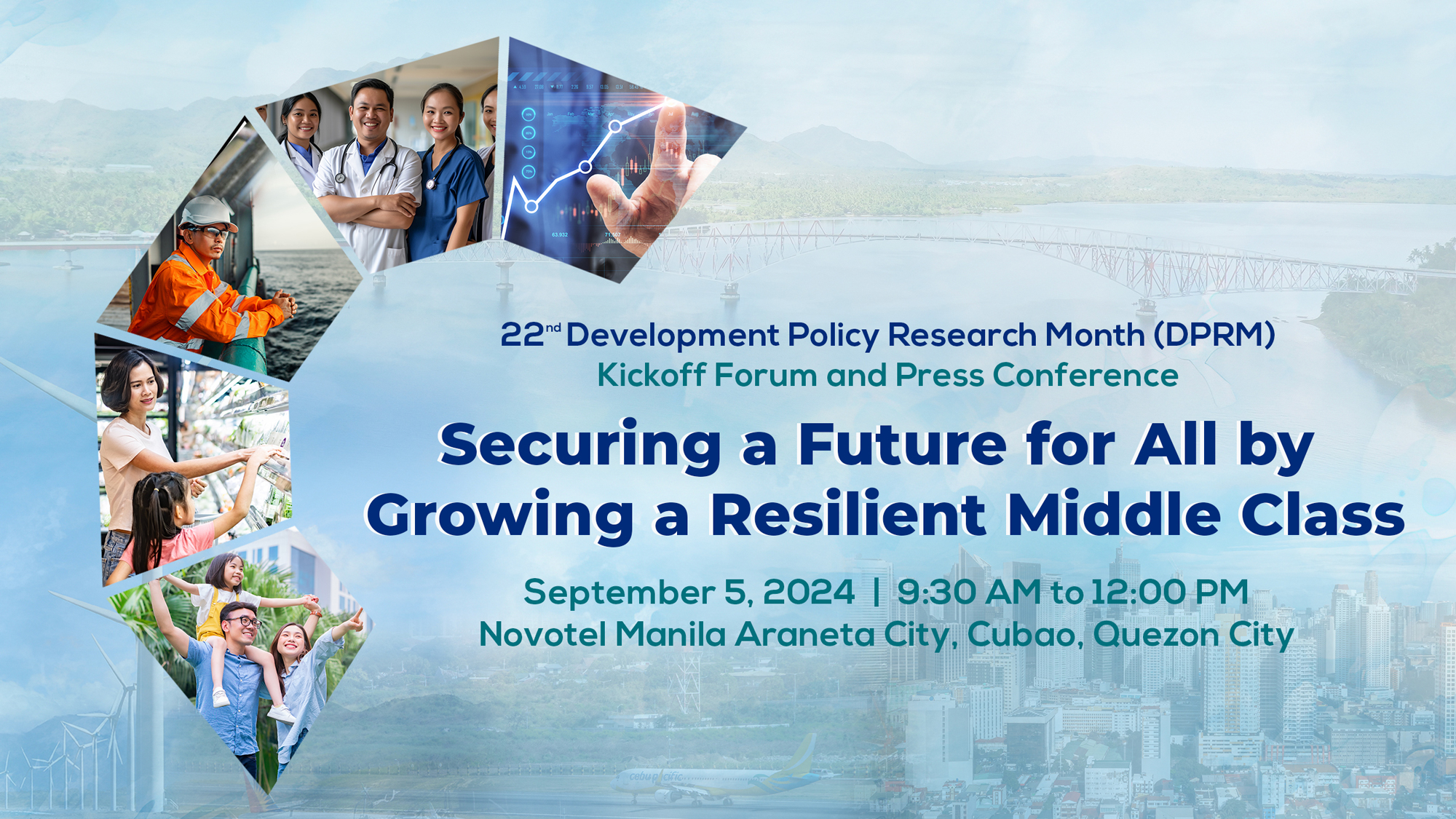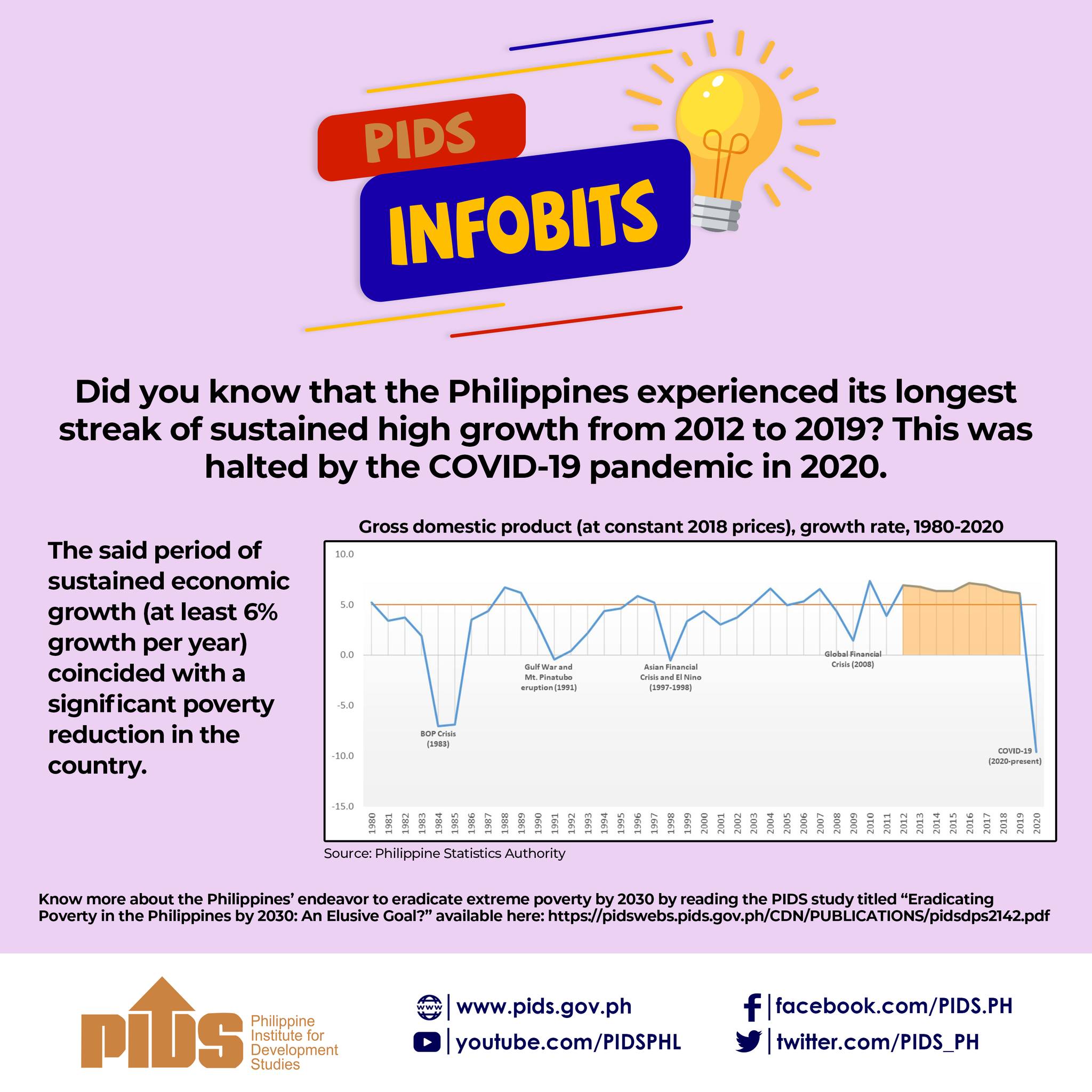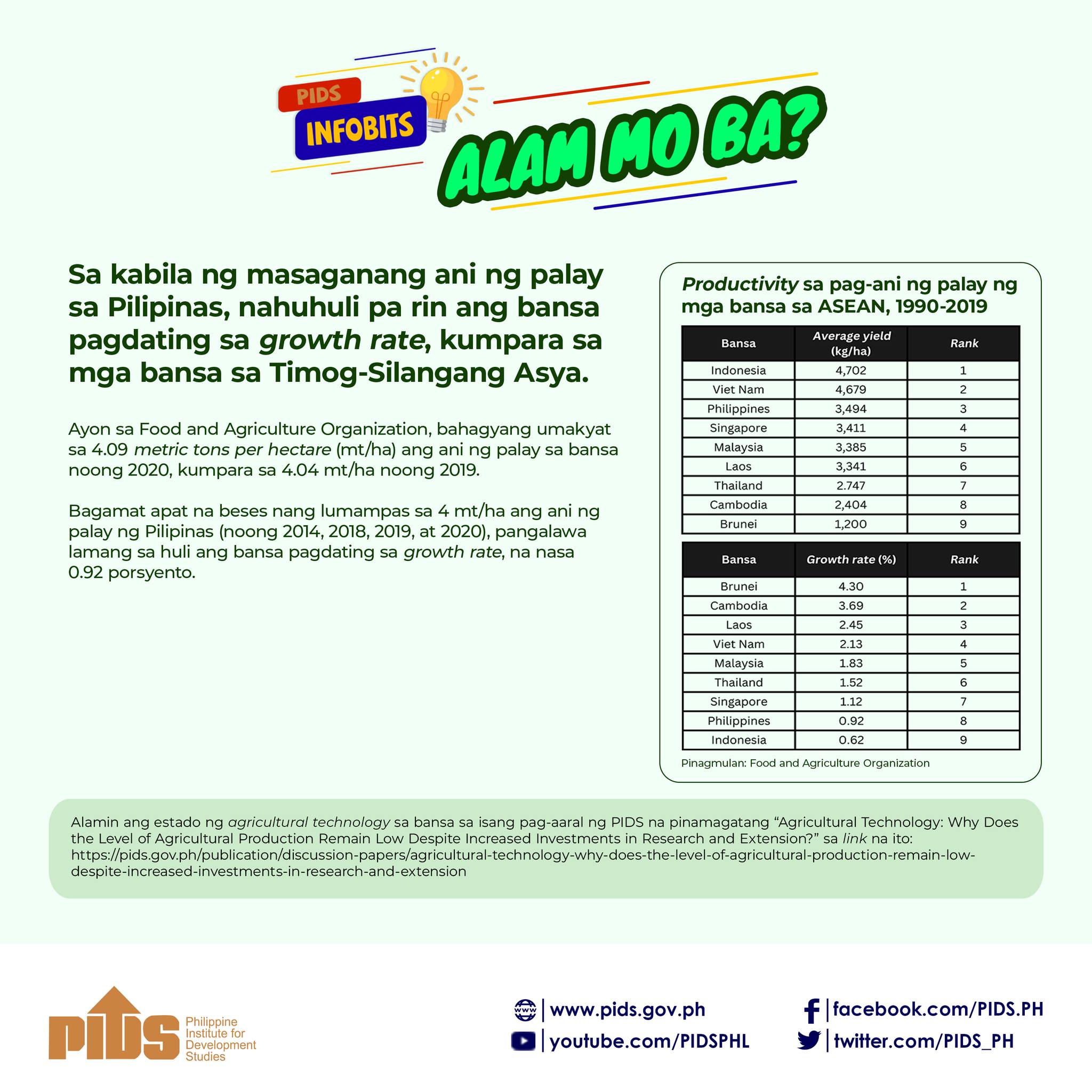Despite facing global economic challenges such as inflation and economic uncertainty, the Philippine economy is poised for continued progress in 2024, with a projected growth of 5.5 to 6 percent. But to stay on track, policy stability and strategic investments are crucial according to a study by the Philippine Institute for Development Studies (PIDS).
The study, titled “Macroeconomic Outlook of the Philippines in 2023–2024: Prospects and Perils”, authored by PIDS Research Fellow Margarita Debuque-Gonzales, and Research Analysts Mark Gerald Ruiz and Ramona Maria Miral, examines the country’s economic performance and charts its potential future course.
It stated that while 2023 witnessed a 5.2 percent growth driven by the reopening of the economy and sectoral recovery, 2024 is expected to witness a slightly slower expansion. However, it emphasized that the projected growth remains within the government’s target range, indicating steady progress and resilience in the face of global risks.
“A key driver of growth in 2024 is expected to be domestic consumption, supported by a steady flow of remittances from overseas Filipinos, rising wages that partially offset declining purchasing power, and an improving job market with an increasing number of wage and salary earners,” the authors noted. “This robust domestic demand is projected to act as a buffer against the impact of a weaker global outlook,” they added.
On the inflation front, the Philippines is expected to see some relief in 2024. While headline inflation is projected to average 6 percent in 2023 due to supply-chain disruptions, it is expected to fall within the Central Bank’s target range of 3 percent this year. Easing pressure on commodities and base effects are seen as key factors contributing to this decline.
“Despite the positive outlook, several potential risks deserve attention,” the authors warned. They highlight the importance of maintaining the independence of the Central Bank and its focus on inflation control, as mixed messaging and missed timing in monetary policymaking could pose challenges.
Additionally, concerns are raised regarding potential delays in fiscal policy reforms, particularly in detailing the country’s medium-term fiscal framework (MTFF). The authors call for a comprehensive approach to fiscal sustainability, urging clarity on additional revenues from legislative measures and the timing of deficit-reducing measures.
Effective management of the newly established Maharlika Investment Fund is another crucial aspect. According to the authors, “while it holds potential for boosting economic growth and development, its success hinges on strong governance and clear objectives”. Appointing a credible board and professional management team is essential to ensure good governance and minimize political interference.
The authors reiterate their previous policy recommendations, including controlling inflation without harming growth, managing exchange rate volatility while maintaining flexibility, rebuilding fiscal space, and investing in infrastructure and human capital.
Effective policy responses to these risks and continued implementation of sound economic policies will be key to ensuring sustainable growth and development in the Philippines in 2024.
This PIDS study served as the lead chapter in the latest 2022-2023 Economic Policy Monitor which examines the intersection of green transformation and digitalization, pivotal for sustainable, tech-driven growth. Read the full publication here: https://pidswebs.pids.gov.ph/CDN/document/pidsepm2022-2023.pdf.

